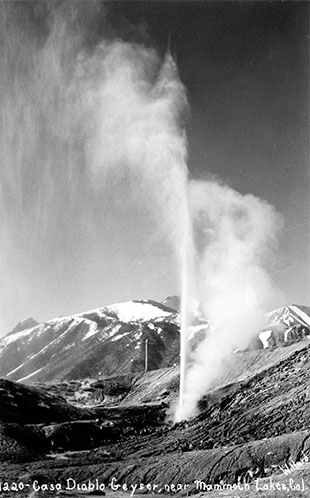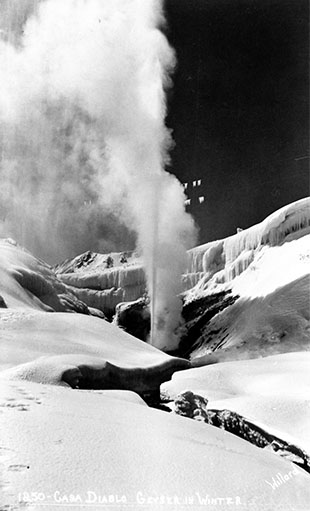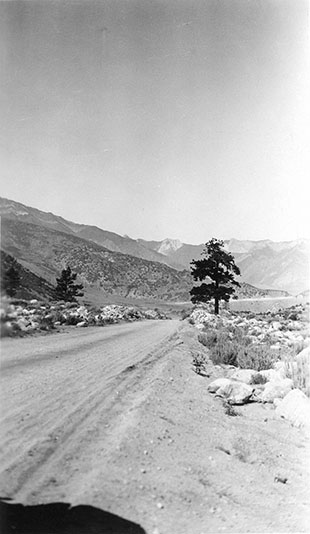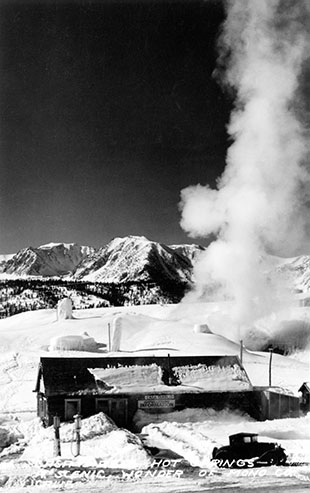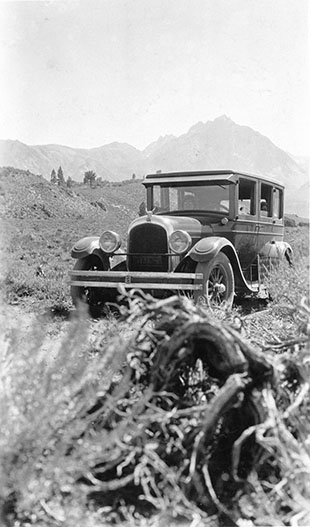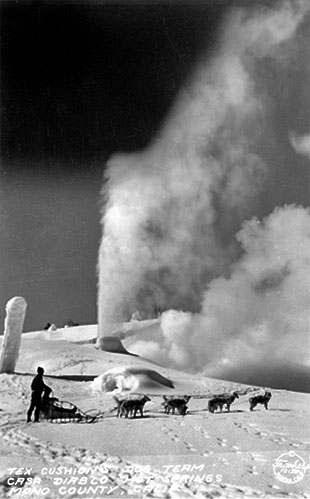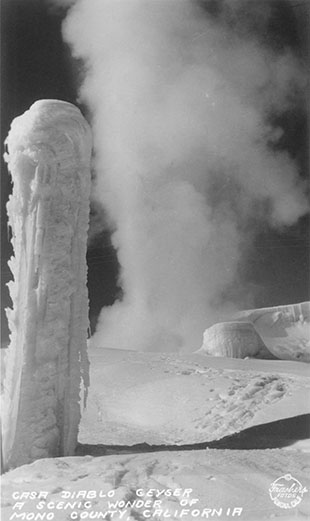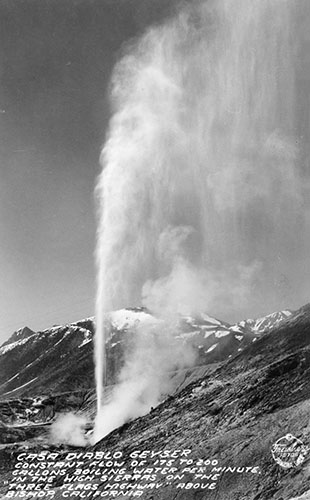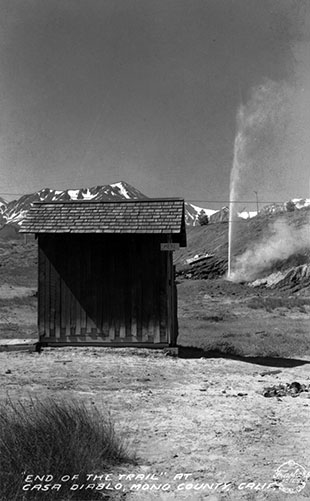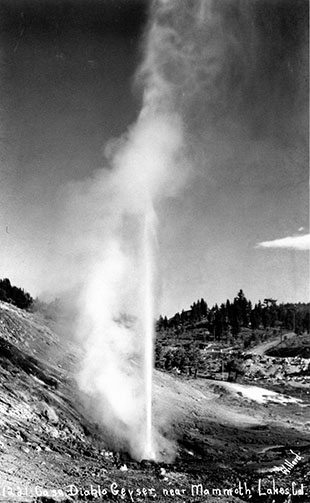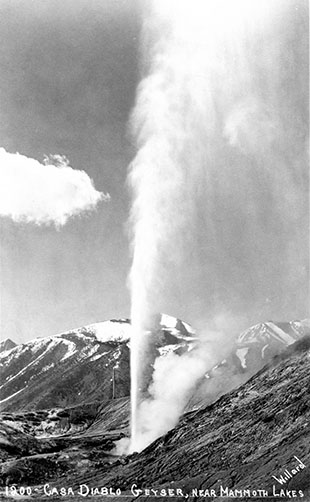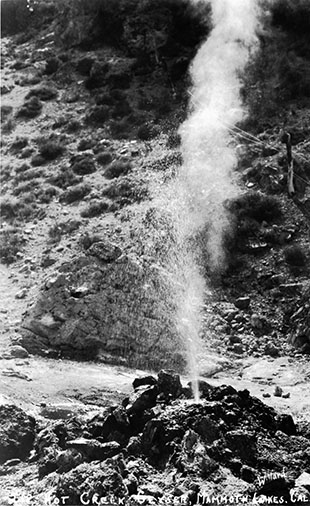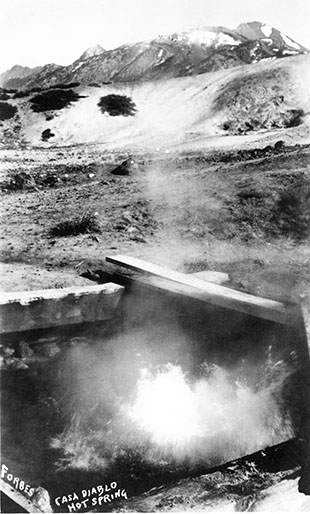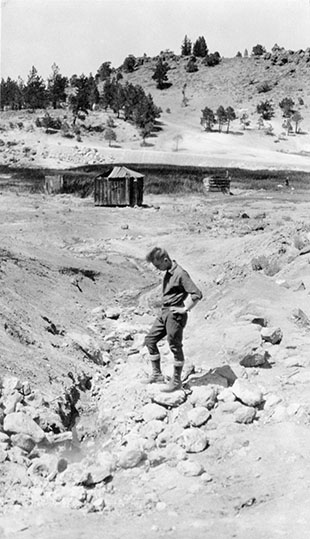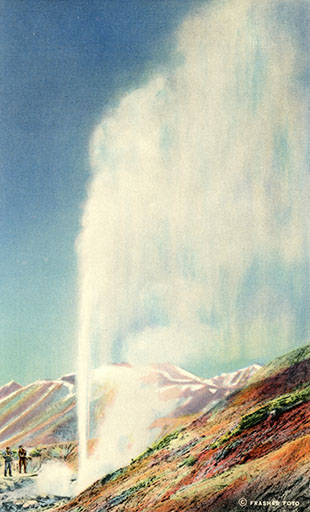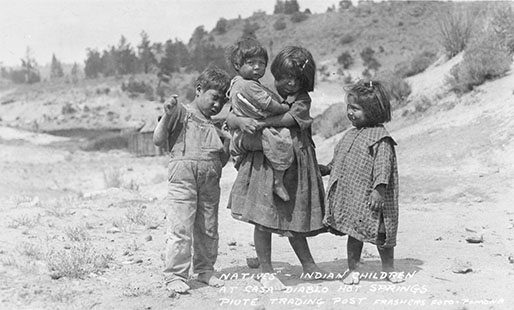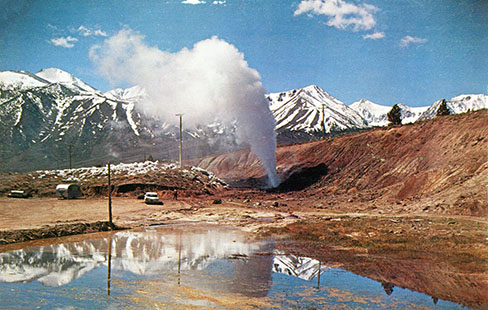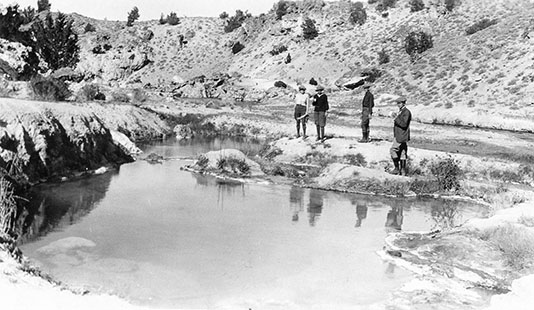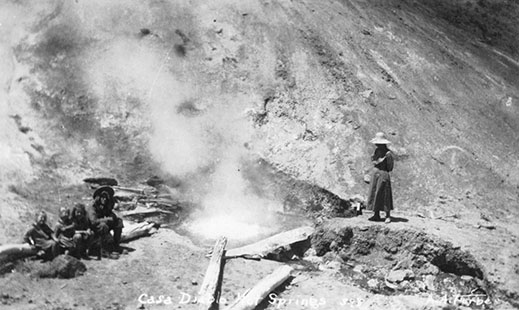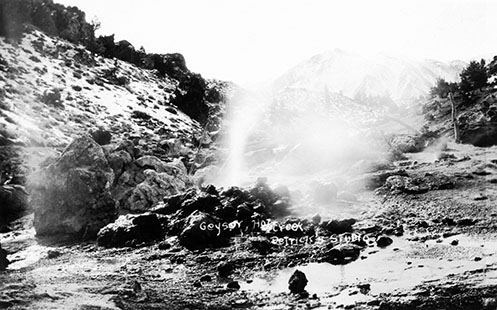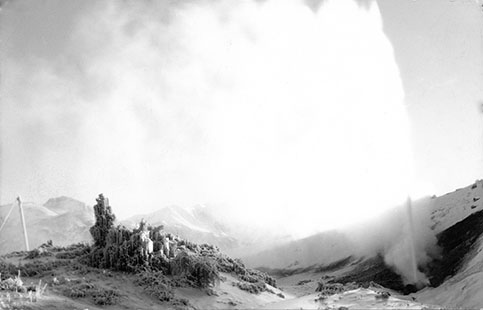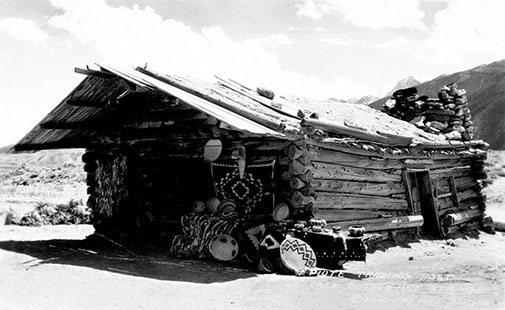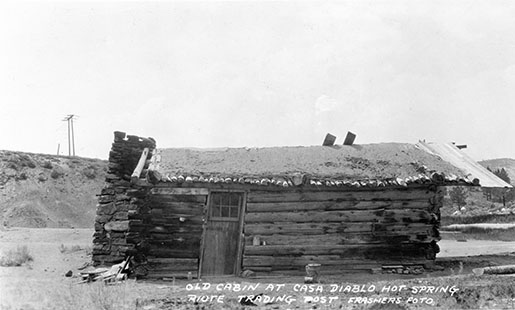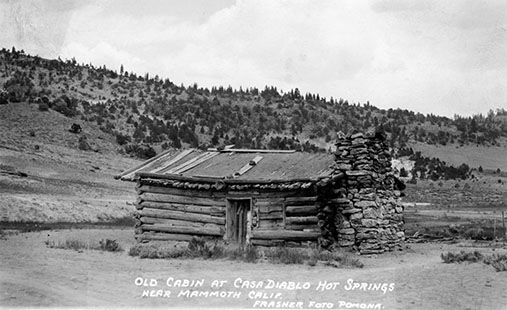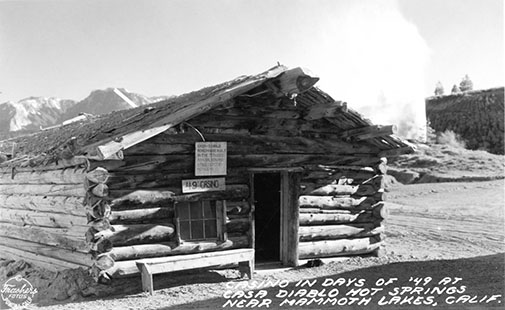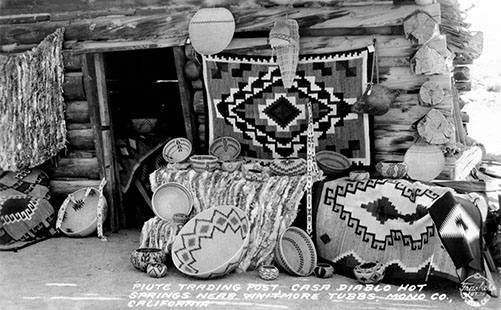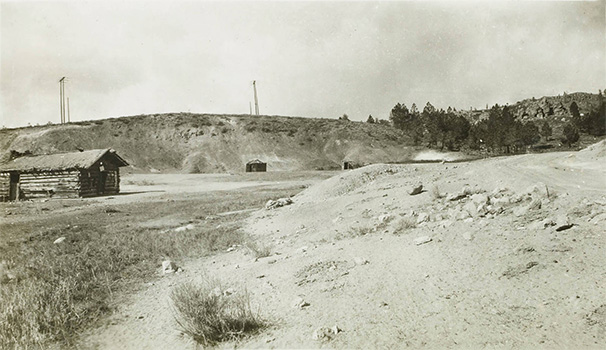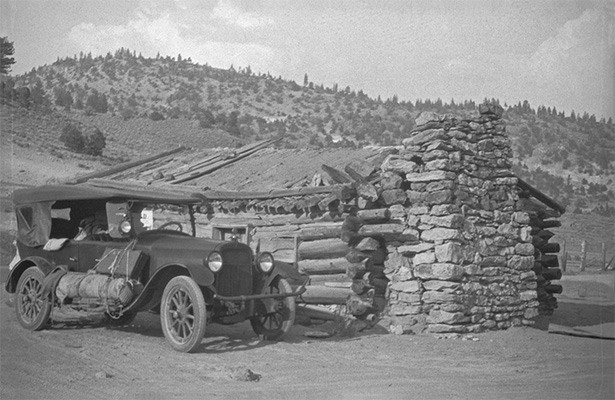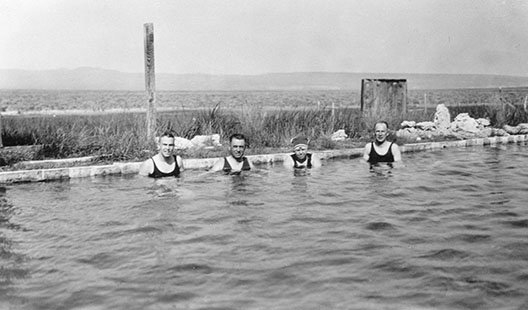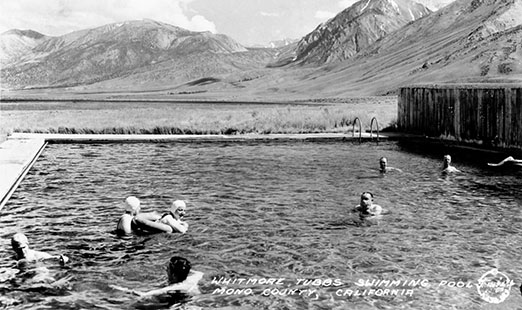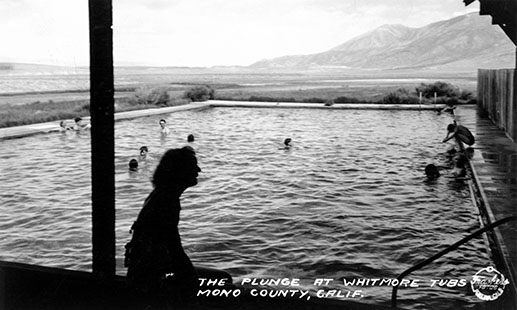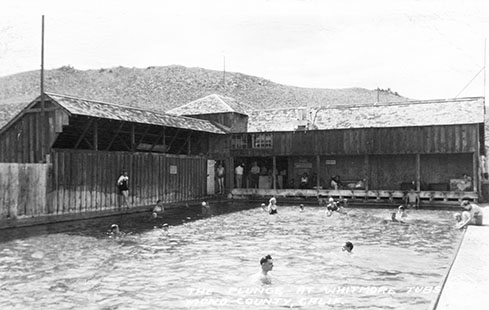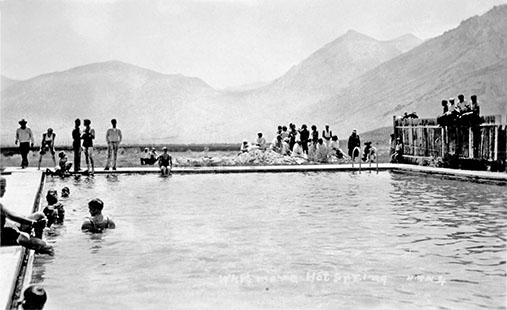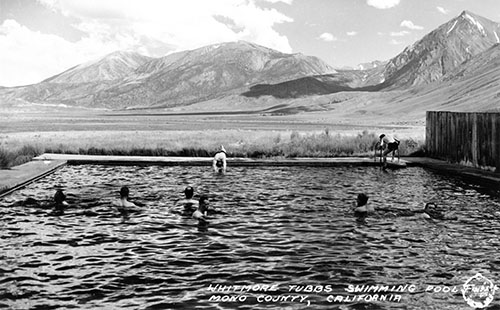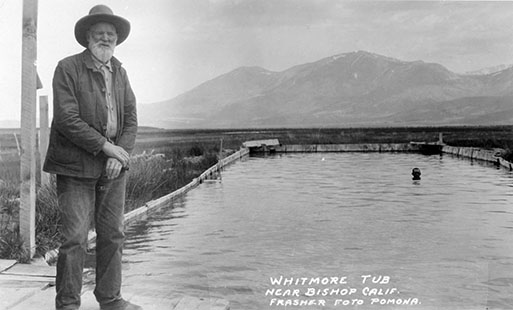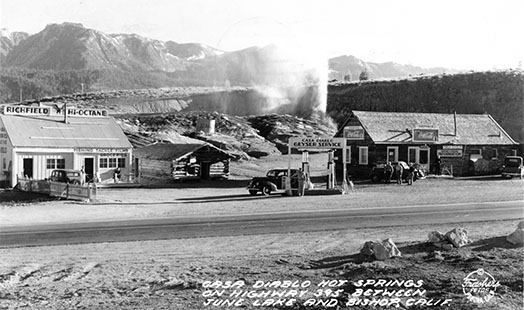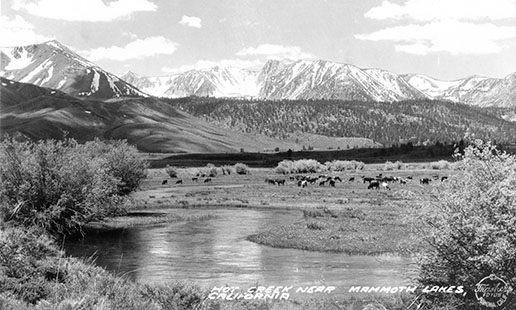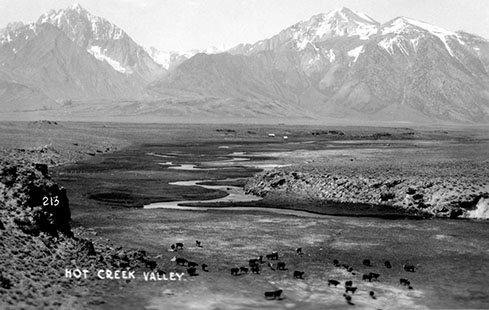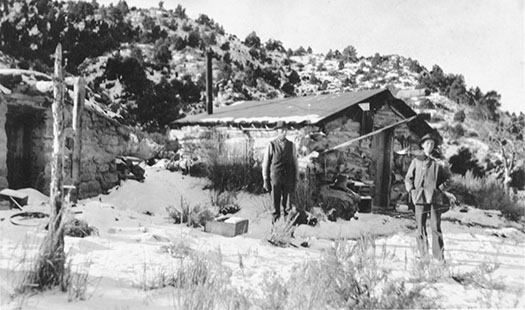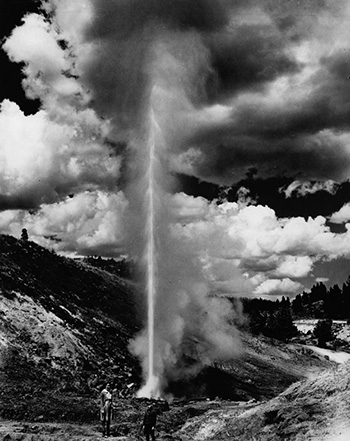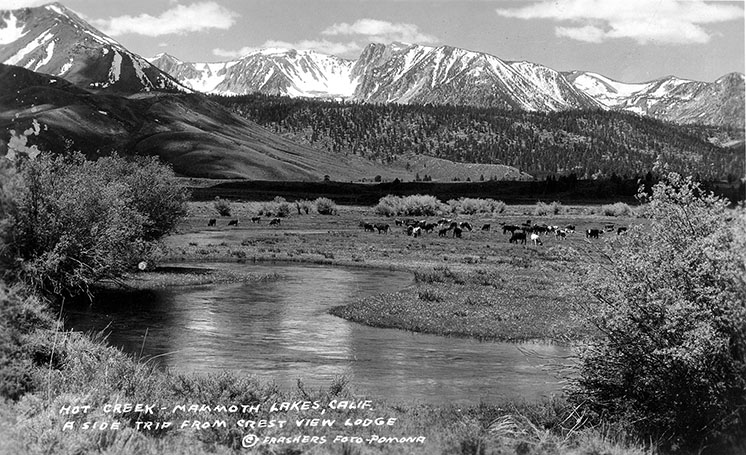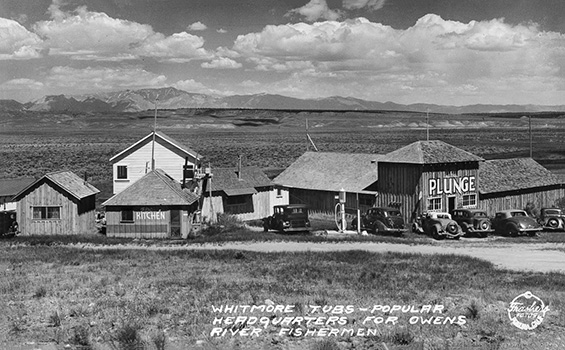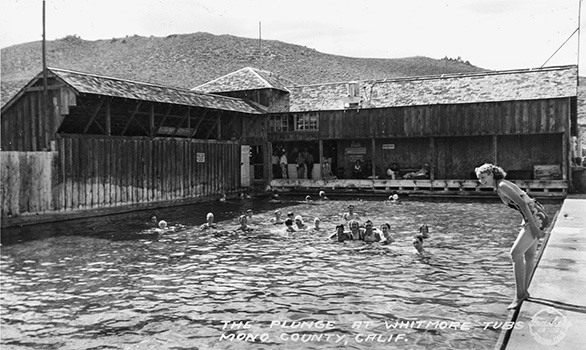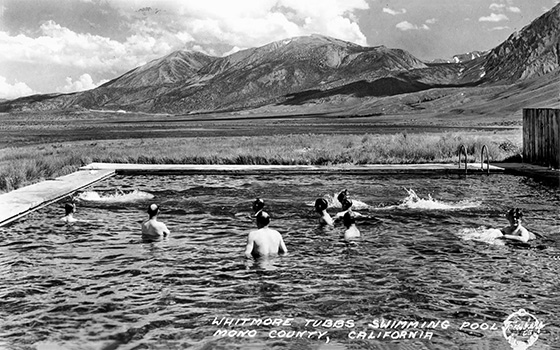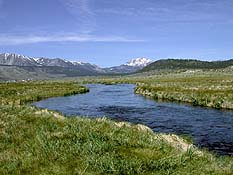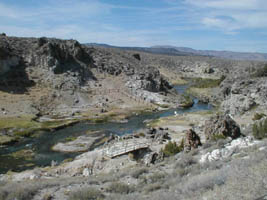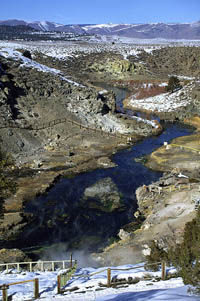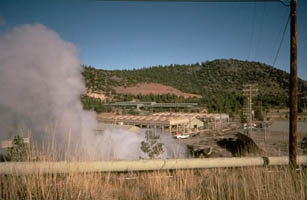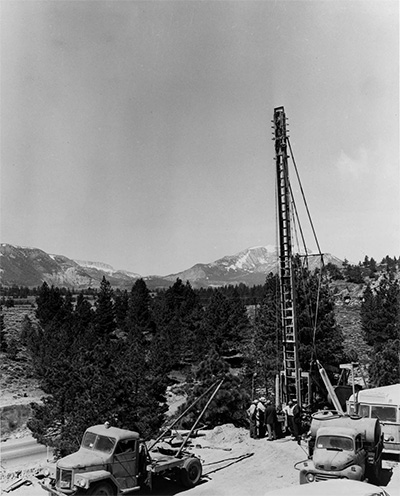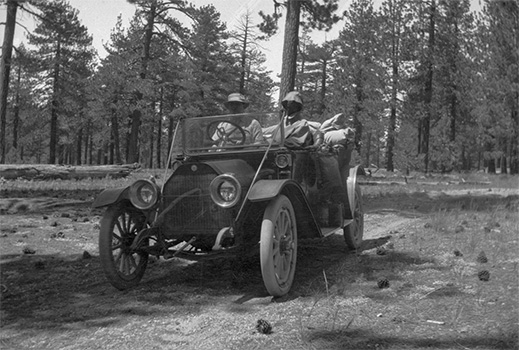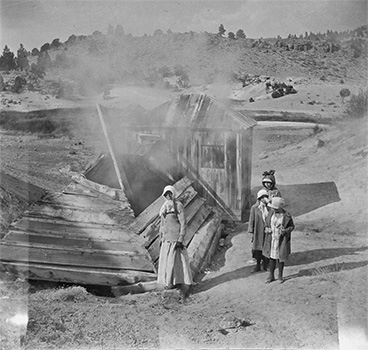




















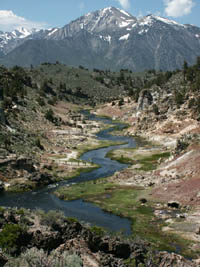 Hot Creek looking west towards the Sierra Nevada crest. |
 and  |
|
See USE NOTICE on Home Page. |
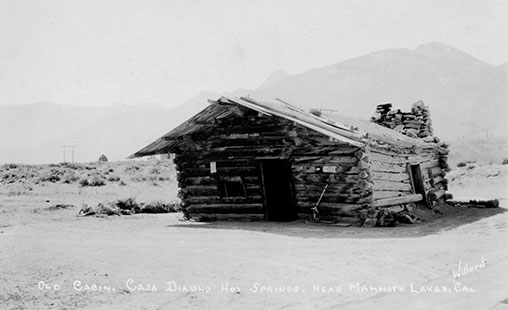 Old Cabin at Casa Diablo Hot Springs 1930. |
|
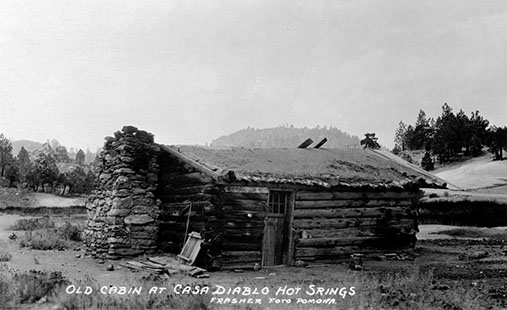 Old Cabin at Casa Diablo Hot Springs 1930. |
|
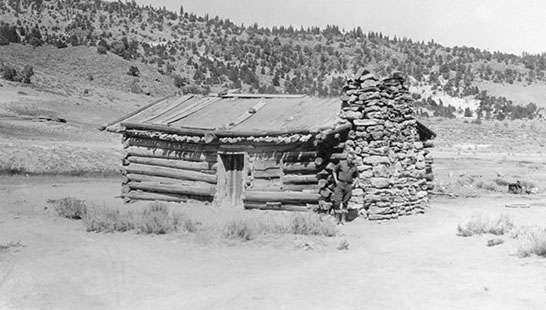 Old Cabin at Casa Diablo Hot Springs 1930. |
|
CALTRANS MAGAZINE - 1938 (Article courtesy of Hal Eaton) |
|
|
|
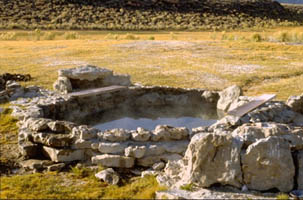 Fleur-de-Lys Hot Spring in the Long Valley caldera. |
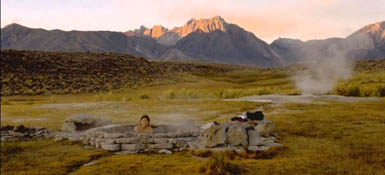 Fleur-de-Lys Hot Spring in the Long Valley caldera. |
Casa Diablo photos courtesy of UCLA Digital Library Collections Photos from the 1913 David F. Smith and Henry Hebard West Tour |
|
 ...The Force Behind Casa Diablo, Mammoth Mountain, Mono Craters, and the Hot Creek region of Owens Valley. |
| About
760,000 years ago a cataclysmic volcanic eruption in the Long
Valley, California area blew out 150 cubic miles of magma from
a depth of about 4 miles beneath the Earth's surface. Rapidly
moving flows of glowing hot ash covered much of east-central
California, and airborne ash fell as far east as Nebraska. The
Earth's surface sank more than 1 mile into the space once occupied
by the erupted magma, forming a large volcanic depression that
geologists call a caldera. The massive Long Valley eruption was
followed by hundreds of smaller eruptions over the next few hundred
thousand years. These eruptions of lava flows, domes, and pyroclastic
flows were concentrated in the central and western parts of the
caldera. Volcanic activity then moved northward to the Mono Lake
area about 35,000 years ago to build the Mono Craters. The most
recent eruptions in the area occurred from the Mono and Inyo
Craters about 600 years ago, and from Negit Island in Mono Lake
about 250 years ago. Fallout from the Long Valley eruption blanketed most of the western states with ash as far east as Nebraska, and covered the Mono Basin, Owens Valley, and parts of the Sierras in 600-3,000 feet of 1300 degrees F. burning ash. |
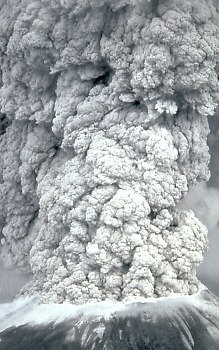 Pyroclastic explosion similar to what happened 760,000 years ago in Long Valley. |
|
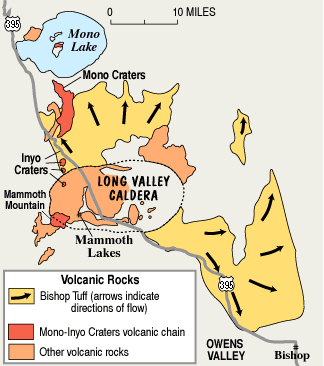 The Long Valley Caldera - Source of all of the thermal activity in the Mammoth Lakes, Casa Diablo, and Hot Creek region of Owens Valley. |
This
ash solidified into a pinkish igneous rock known as the Bishop
Tuff, a layer of which covers 580 square miles of California
and Nevada and is especially exposed along the highways of the
Mono Basin and Owens River Valley region.
The Long Valley Caldera is only one part of a large volcanic system in eastern California that also includes the Mono-Inyo Craters volcanic chain. This chain extends from Mammoth Mountain at the southwest rim of the caldera northward 25 miles to Mono Lake. Eruptions along this chain began 400,000 years ago, and Mammoth Mountain itself was formed by a series of eruptions ending 50,000 years ago. The volcanic system is still active. Scientists have determined that eruptions occurred in both the Inyo Craters and Mono Craters parts of the volcanic chain as recently as 600 years ago and that small eruptions occurred in Mono Lake sometime between the mid-1700's and mid-1800's. Long Valley, from the headwaters of Owens River to Lake Crowley, is a giant 10-mile-wide, 20-mile-long volcanic caldera. Long Valley occupies the eastern half of this caldera. Magma still underlies the caldera and heats underground water. The heated water feeds local hot springs and natural steam vents and drives three geothermal power plants, producing a combined 40 megawatts of electricity |
|
| The resurgent dome is a broad area of the central caldera floor that was pushed upward within 100,000 years or less of the caldera-forming eruption 730,000 years ago. This uplift was caused by upward pressure related to the intrusion of molten rock into the magma reservoir beneath the caldera. The resurgent dome is made of layers of lava flows, tephra, and pyroclastic flows that were erupted onto the caldera floor soon after the caldera formed. The uplift arched and faulted these volcanic rocks to form a central highland area about 10 kilometers in diameter and as high as 500 meters above the surrounding caldera floor. |
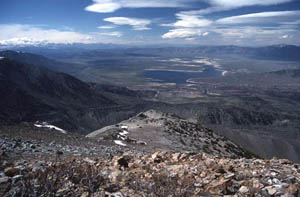 View of the Long Valley Caldera with Crowley Lake in the background. |
|
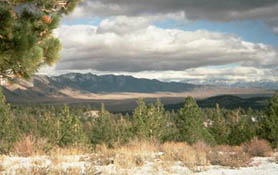 Another view of the Long Valley Caldera looking towards the Sierra Nevada in the background. |
Elevation map of the Long Valley Caldera & Vicinity. Vertical map of the Long Valley Caldera & Vicinity. Cross-Section of the Long Valley Caldera. |
|
Mammoth Mountain - a massive volcanic dome - has grown on the Long Valley caldera margin. Mammoth Mountain was built by eruptions between about 200,000 and 50,000 years ago. Mammoth Mountain was built by the eruption of at least 12 different steep domes and thick lava flows. These eruptions occurred between about 200,000 and 50,000 years ago. Volcanic activity then moved northward to the Mono Lake area about 35,000 years ago to build the Mono Craters, a collection of more than 30 overlapping lava flows, domes, cones, and craters. The most recent eruptions in the area occurred from the Mono Craters and Inyo Craters about 600 years ago, and from Negit Island in Mono Lake about 250 years ago. The Long Valley Caldera is only one part of a large volcanic system in eastern California that also includes the Mono-Inyo Craters volcanic chain. This chain extends from Mammoth Mountain at the southwest rim of the caldera northward 25 miles to Mono Lake. Eruptions along this chain began 400,000 years ago, and Mammoth Mountain itself was formed by a series of eruptions ending 50,000 years ago. The volcanic system is still active. Scientists have determined that eruptions occurred in both the Inyo Craters and Mono Craters parts of the volcanic chain as recently as 600 years ago and that small eruptions occurred in Mono Lake sometime between the mid-1700's and mid-1800's. |
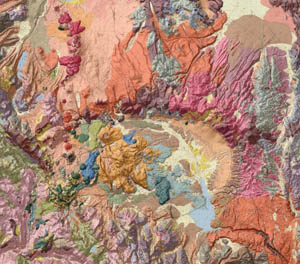 Geological map of the Long Valley Caldera. |
|
The Mono Basin lies in one of the most geologically active areas on the planet. Its eventful history of volcanic activity is evident in both the extinct volcanic ranges of the Bodie and Anchorite Hills to the north and east and the dormant Mono Craters to the south. While the rolling Bodie and Anchorite hills were last active over hundreds of millions of years ago, the Mono Craters are the youngest mountain range in North America--the oldest of its 9,000' peaks is only 40,000 years old. Panum Crater, the northernmost and youngest of the Craters, erupted only 640 years ago. The caldera has recently reawakened. In May of 1980 four M 6.0+ earthquakes rocked the caldera. Accompanying this seismicity has been reinflation of the central resurgent dome at rates upwards of 3mm/yr, several theorized dike intrusions in the southern moat and at Mammoth Mt., as well as massive volcanic gas exhalations on the flanks of Mammoth. |
||
|
Long Valley Caldera Geology |
 Hot Creek thermal area with some of the thermal pools in the center background. |
|
|
Aberdeen | |
|
|
Keough Radium Hot Springs | |
|
|
Allie Robinson Pack Trains | |
|
El Camino Sierra |
|
|
|
Aparejo Packing the the Sierra Nevada |
|
|
|
Sawdust Magazine |
|
Sign Guestbook View Old Guest Book Entries Oct 1999 - Feb 2015 (MS Word) |
 CONTACT the Pigmy Packer |
View Guestbook View Old Guest Book Entries Oct 1999 - Feb 2015 (PDF) |
